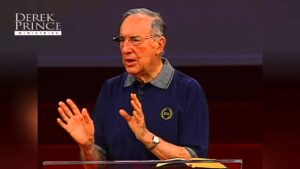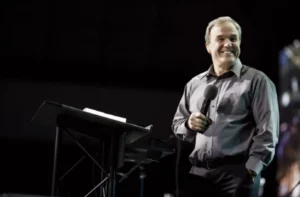
The Jesus Revolution
Restoring the Church to the Original Blueprint
This picture taken at House of Agape in Kansas City, MO.
The Jesus Movement
A Return to the New Testament Church of the Book of Acts
"Central to understanding the Jesus People Movement was the Jesus People's singular devotion to and zeal for evangelism. At the core of the movement’s identity was an abiding belief that the gospel was good news for a lost and wandering generation.
The name came from its focus: adherents sought to reach people for Jesus. Street evangelism, evangelism bands traveling across the country to share Christ, and a host of evangelists and evangelistic ministries arose from its ranks. Even in their defining slogan — the raised finger and words “one way,” was an acknowledgement that in the midst of such pain, chaos and uncertainty, it was solely through belief in Jesus that people could find the peace and joy they craved.
Many of the central innovations of the JPM — such as the coffeehouse movement or local underground newspapers — were built upon models derived from the counterculture. This was most evident in the emergence of Jesus music. What many in the mainstream church had dismissed as the devil’s music, JPM musicians reclaimed as powerful tools for both worship and evangelism." From: The Lasting Legacy of the Jesus People -- How an Unlikely, Countercultural Movement went Mainstream by Andrew MacDonald, Ed Stetzer
In his book, The Jesus People Movement: An Annotated Bibliography and General Resource (Bibliographies and Indexes in Religious Studies) author David Di Sabatino writes, "The founder of Agape was David Rose – Young charismatic hippie who converted and was later influenced by Jack Sparks of the Christian World Liberation Front. Compelled by a vision to open a mission to teenagers in the Midwest, he returned to Kansas City and opened the House of Agape. By the early 1970s their efforts had spawned a well attended church out of which came the music of Paul Clark and The Hallelujah Joy Band. After joining a mission team to the 1972 Olympics in Munich, Rose ventured to Israel where he functioned as the church’s overseas missionary for a number of years."
"One of the popular albums from this period was Paul Clark's – Good to Be Home (Seed, 1975) This album just sounds like they were having a good time recording it. Includes Phil Keaggy. From The Jesus People Movement: An Annotated Bibliography and General Resource (Bibliographies and Indexes in Religious Studies).
History of The Jesus Movement — The Jesus Revolution
The Jesus Movement was the third stream of the spiritual revolution of the 1960s. It began in the late 1960s and continued into the 1970s and had a significant impact on American Christianity, blending countercultural elements of the time with evangelical faith. The movement marked a distinctive period where young people, many from the hippie generation, embraced Christianity in non-traditional ways and emphasized Jesus's teachings on love, peace, and social justice.
1. Origins and Context
Social and Cultural Backdrop: The movement emerged during the turbulent 1960s, a time marked by the Vietnam War, civil rights struggles, the sexual revolution, and a burgeoning countercultural movement. Many young people were disillusioned with traditional societal values, materialism, and organized religion, seeking spirituality in alternative lifestyles and philosophies.
This became known as the hippie movement, a counterculture rooted in a rejection of mainstream American society. It placed emphasis on peace, love, and communal living. However, many young people found drugs, sex, materialism, and Eastern philosophies lacking, they turned to Jesus, seeking a fresh, authentic spiritual experience centered around Jesus.
Influence of Charismatic and Pentecostal Renewal: The charismatic renewal of the 1960s, emphasizing the gifts of the Holy Spirit such as speaking in tongues, healing, and prophecy, also influenced the Jesus Movement. Many young Christians sought these charismatic expressions as a way to experience God more directly.
2. The Beginning of the Jesus Movement
Steve (O’Shea) Heefner and his wife Sandy along with Ted and Liz Wise, Jim and Judy Doop, and Danny and Sandy Sands started a communal ministry in the summer of 1967 by moving in together in what became known as the “Big House.” The house was in Novato, California, located about 30 miles north of San Francisco's Haight-Ashbury district, across the Golden Gate Bridge in Marin County. They decided to live like the Book of Acts, and many referred to their commune as the House of Acts, and credit it as the birthplace of the Jesus Movement. This living like the Book of Acts became a key for us in Kansas City in the early 1970s.
Just as the four couples and their children were settling in, thousands of young hippies were arriving at San Francisco’s Haight Ashbury district for “the summer of love.”
The couples started their outreach to the hippies by taking donuts on a Friday night into the Haight-Ashbury district where they began witnessing for Christ. The need was so great, they decided to set up a mission one block down off Haight Street that became known as “The Living Room.” It was during this time that they met Lonnie Frisbee, who eventually crashed on their living room during the early months of his Christian life. This is where Lonnie grew in the Lord under their influence, before joining Pastor Chuck Smith at Calvary Chapel.
Lonnie Frisbee was a charismatic young evangelist and a key figure in the Jesus Revolution. With his background in the hippie lifestyle and his powerful preaching, he drew many young people to salvation. According to his wife Connie, “Lonnie could barely read and write. Abandoned by his father, raped as a child, he tripped out on LSD as a teen and indulged in gay sex. Yet God chose him to be the key evangelist, the broken vessel, at the heart of the Jesus movement in the late 1960s and 70s. God used Lonnie to help ignite and propel the rapid growth of two major movements – Calvary Chapel and later the Vineyard.
A key point to me, and key to all three God Movements of the 1960s is something else Connie Frisbee said, “When we got saved and started reading the Bible we just believed everything we read.” This is what we believed at the start of Agape Fellowship in 1971 in Kansas City.
In 1968 Chuck Smith was already the pastor of Calvary Chapel in Costa Mesa, California. He was frustrated with the hippie movement and didn’t see how to reach them. His daughter and her boyfriend had met Lonnie Frisbee and introduced Lonnie to Chuck, thinking he might bridge the gap between Chuck's conservative church and the hippie youth.
When they met, Chuck was impressed by Lonnie’s charisma, knowledge of the Bible, and his love for Jesus, despite his wild appearance (long hair, beard, barefoot). Chuck invited Lonnie to live in his home and eventually to preach at Calvary Chapel — and the church exploded in growth, with hundreds of young people getting baptized and converted.
Their partnership was a key spark that ignited the Jesus Movement in Southern CaliforniaChuck Smith and Calvary Chapel: Pastor Chuck Smith and his church, Calvary Chapel, in Costa Mesa, California, became central to the movement. Chuck Smith welcomed hippies, surfers, and others who were often turned away by traditional churches. Under his guidance, Calvary Chapel grew rapidly, and Chuck’s style of teaching verse-by-verse through the Bible appealed to young believers.
Outreach and Gatherings: The Jesus Movement attracted thousands of young people through informal gatherings, concerts, and communal living arrangements. Unlike traditional church services, these gatherings often included rock music, informal dress, and a relaxed, welcoming atmosphere. Key gatherings, like the "Jesus Freak" concerts and rallies, provided venues where young people could share their testimonies and encounter God in a way that resonated with their generation.
3. Beliefs and Practices
Focus on Jesus: The movement was intensely Christ-centered, with Jesus seen as a personal Savior and friend who offered freedom from sin, despair, and emptiness. "One Way" became a popular slogan, symbolized by a single raised finger pointing to heaven, representing Jesus as the only way to salvation.
Authority of the Bible: While often informal, the movement upheld a high view of Scripture, emphasizing that the Bible was the authoritative word of God. Bible studies were central, and many participants learned Scripture in a way that allowed them to share it with others.
Holy Spirit and Miracles: Miraculous healing, speaking in tongues, and other spiritual gifts were common, reflecting the influence of charismatic Christianity. Worship often featured contemporary Christian music, which led to the birth of the modern Christian music industry.
Communal Living and Evangelism: Many Jesus People formed communes where they could live out their faith together, emphasizing simplicity and shared resources. Evangelism was a key part of their life, with members engaging in street evangelism, distributing tracts, and conducting baptisms in unconventional places like rivers or beaches.
4. Impact and Legacy
Rise of Contemporary Christian Music (CCM): Music played a crucial role in the Jesus Movement. Musicians like Larry Norman, Chuck Gerard and Love Song, 2nd Chapter of Acts, and Paul Clark pioneered what became known as Contemporary Christian Music. This style of music made Christianity accessible to younger generations and became a lasting genre within the Christian music industry.
Church Growth and New Denominations: The Jesus Movement led to rapid growth in certain churches, especially Calvary Chapel, which expanded nationally and internationally. The Vineyard Church, co-founded by former Calvary pastor John Wimber, also emerged from the Jesus Movement and emphasized charismatic worship and evangelism.
Increased Evangelical Influence: The Jesus Movement brought renewed energy and youth into the evangelical community, which influenced larger evangelical organizations, especially with a focus on "born-again" language, which became mainstream in American Christianity.
Social Outreach: While the Jesus Movement was not initially politically driven, it emphasized care for the poor, racial reconciliation, and other social issues, influencing future generations of Christians to engage in social justice as part of their faith.
5. Decline and Transformation
Shift Toward Institutionalization: By the late 1970s, the Jesus Movement began to lose momentum. Some communes dissolved, and the movement’s initial spontaneity waned as many Jesus People joined or formed organized churches.
Criticism and Challenges: The movement faced internal struggles, with some leaders falling into scandal and disputes over doctrine. Others criticized it as overly emotional or simplistic, yet it had already made a lasting impact on American Christianity.
6. Legacy in Modern Christianity
The Jesus Movement laid the foundation for much of contemporary evangelical culture. The emphasis on personal faith, informal worship, contemporary music, and social outreach influenced the style and priorities of many evangelical churches that followed.


